A Way of Life in the USA
Hunting is a way of life in the United States, and we are here to help you be as successful on the hunt as possible.
20 Elk Hunting Tips For a Successful Hunt
Elk hunting is a very exciting sport that many people can enjoy by visiting the Midwest or northwest of the United States or Canada. Elk, also sometimes affectionately referred to as Wapiti, are the largest deer in the world. They are sometimes referred to as Wapiti because that is the term given to them by the Shawnee people and the Cree nation. The term “Wapiti” is used to maintain the history of the Native Americans who were here before any European settlers. The danger and physical strain of the sport make it especially challenging for any hunter, which just adds to the appeal.
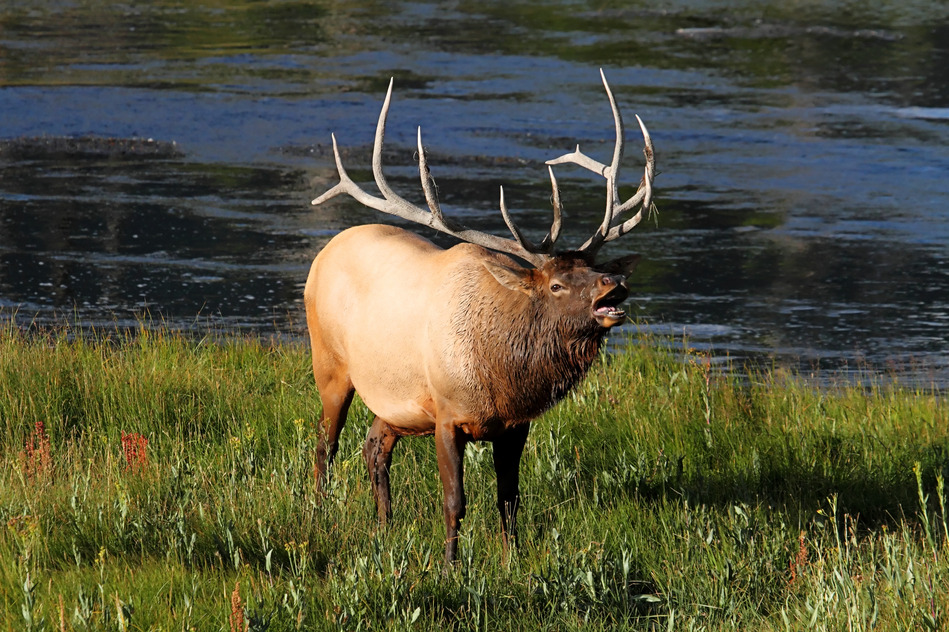 This article will list twenty tips for hunting Wapiti, from preparation to the kill. This adventure can be the time of your life if you take the time to prepare and be safe; however, if you decide not to follow these tips, your chances of success go down, and you could even end up having a serious problem like an injury in the field. This is because of the freezing temperatures, the wildness of the location, and the unpredictability of wildlife, from the elk you are hunting to the mountain lion who might be hunting as well.
This article will list twenty tips for hunting Wapiti, from preparation to the kill. This adventure can be the time of your life if you take the time to prepare and be safe; however, if you decide not to follow these tips, your chances of success go down, and you could even end up having a serious problem like an injury in the field. This is because of the freezing temperatures, the wildness of the location, and the unpredictability of wildlife, from the elk you are hunting to the mountain lion who might be hunting as well.
1. Know your prey.
Study as much as you can about Cervus Canadensis (also known as Wapiti). Being a hunter, especially of elk, is like being in the military: the more information you know about the situation, the better capable of following out orders you will be. Learn the elk’s diet, hoof prints, and what their senses are like to get a good idea of what you should do when hunting elk. Also get to know their gestation period, average weight and size, and the differences between a bull and cow elk. The best way to learn all this information is to buy a hunting guide to elk, such as All About Elk by Mike Lapinski. A book of this standard will teach you everything you could possibly need to know about the prey you are hunting. There are many different books about the elk and how to recognize their habitat and locations, but the book listed above will be a good jumping off point. The point is to read and read a lot; you cannot hunt an animal well if you do not know about it.
2. Follow the hunting regulations.
The main hunting regulation that you must follow is that every hunter must have a hunter’s license issued to them for the state they are hunting in, regardless of residency. You will also be required to provide proof that you took a hunting safety course and, in some states, a gun safety course. You may also need to get special tags or permit required for the state, which are usually given out by lottery. Make sure you check how many kills your permit or tag allot to you for the season to avoid fines, confiscation of weapon and animal, and/or jail time. Without the hunting license and proof of courses passes, along with any special permits or tags, you will be considered a poacher and be fined around $1500 or go to jail.
3. Choose the proper rifle for your needs.
Do not buy a rifle simply because a friend or review recommends it. You will need to pick a firearm that suits you best. There are many options for hunting rifles, with the best rifles only available at gun stores. The features you should look for most in a rifle are manufacturer’s reputation, caliber, stock, and scope optics. First, look for a weapon by a manufacturer with a good reputation. This is where you can ask opinion of your friends and fellow hunters. Some manufacturers with especially good reputations are Winchester, Remington, and Walther. Second, do your research to find the right caliber for you. Every caliber size has its pros and cons. The most popular calibers, however, are .270 Winchester, .308 Winchester, .30-06 Springfield, and .300 Winchester Magnum.
The next thing to consider is whether you want a bolt-action or semi-automatic rifle. You may want the safe, dependable, and accurate bolt-action rifle or you may want the chance to fire off extra rounds with a semi-automatic rifle. Finally, you will want to look at the optics of the scope, as that is how you will spot your target shots. Some hunters go a little crazy when it comes to magnification, but you will be better off with quality over magnification. Look for a scope that has good quality and is ideally either 2-7x or 2.5-8x for elk hunting. Make sure the rifle is less than nine pounds, as you will need to carry it long-distance to get to the hunting location. You may also want to get a carrying case with a shoulder strap or a sling that will mount on the rifle’s stock. With one of these two options, the weight of the rifle will be on your shoulder and back instead of your arm and hand during your trek from camp to the location where you will hunt. Thus, you will be able to hold your firearm longer when you get positioned for the shot because your arm and hand are not tired from carrying it.
If you want a good starting point on buying a rifle, check out our guide to hunting rifles, which has a section specifically for elk hunting.
4. Learn proper shot placement.
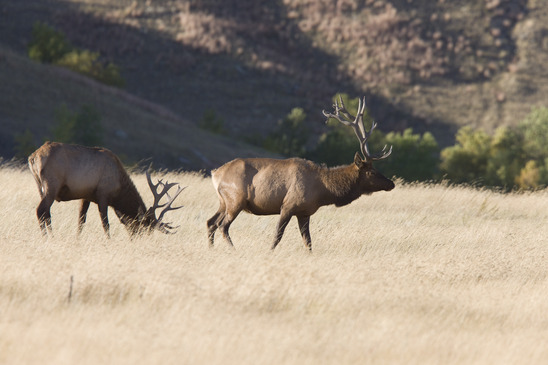 It is your responsibility as a hunter to make a clean kill and be able to recover the elk after the shot. It is important to find an elk anatomy guide and study it thoroughly. The shot placement that all hunters should aim for is the center of the lungs or slightly lower than that center. A shot placed to penetrate both lungs will bring an elk down quickly and relatively painlessly. As you can see if you have an anatomy guide, the elk’s heart is placed slightly lower than the center of the lungs, so even if your shot is a little lower than intended, it still might penetrate the heart, taking down the elk swiftly and cleanly. It is highly suggested that you practice on an elk target before going to hunt, whether you are a novice or experienced hunter. Visit an active target range where they have multiple styles of elk targets, as well as moving targets, to maximize your experience and accuracy before making the shot that counts. Also, if you are using a bolt-action rifle, you may want to practice fast reloading to get multiple shots in within a short time frame. Finally, do not practice just at one distance; multiple distances are preferred because in the field you will not know how far your target will be.
It is your responsibility as a hunter to make a clean kill and be able to recover the elk after the shot. It is important to find an elk anatomy guide and study it thoroughly. The shot placement that all hunters should aim for is the center of the lungs or slightly lower than that center. A shot placed to penetrate both lungs will bring an elk down quickly and relatively painlessly. As you can see if you have an anatomy guide, the elk’s heart is placed slightly lower than the center of the lungs, so even if your shot is a little lower than intended, it still might penetrate the heart, taking down the elk swiftly and cleanly. It is highly suggested that you practice on an elk target before going to hunt, whether you are a novice or experienced hunter. Visit an active target range where they have multiple styles of elk targets, as well as moving targets, to maximize your experience and accuracy before making the shot that counts. Also, if you are using a bolt-action rifle, you may want to practice fast reloading to get multiple shots in within a short time frame. Finally, do not practice just at one distance; multiple distances are preferred because in the field you will not know how far your target will be.
5. Cover your scent.
It is extremely important that, when hunting elk, you cover your scent. This is because elk, like many deer, can scent a human very easily and will scare away. Starting several days before you go on the hunt, bathe with unscented soap, wash your hair thoroughly with unscented shampoo, and wear unscented deodorant. You will also want to use unscented laundry detergent on your elk hunting outfit. Finally, you should use a commercial scent coverer or scent eliminator. These products can all be found at your local hunting gear retailer.
6. Use the right elk call for maximum effect.
Using an elk call can really drive in the elk for the kill. Not everyone can use one, but if you can, you will want to find the right one for the season you are hunting in. There are six types of elk calls, two for bull elks and four for cow elks. For the bull elk, the two types are the bugle call, which is used during pre- and post-rut, and the wake call, which is used during pre-rut. For cow elks, there are four types: the cow elk call is used during pre-rut to call both cows and bulls; the excite call is used during the peak of rut when cows are looking to mate; the muse and soft chirp call is used to coax a bull that is close to your position; finally, the alarm barks call is used to try and stop a scared elk long enough to take the shot. There are two tips that cannot be stressed enough. First, practice as much as possible. If the state you want to hunt in allows elk calling without a permit or tag, practice calling the bulls and cows even if you do not win the lottery for a permit or tag. Just call over and over and see what happens each time. Secondly, always be ready to take the shot before you call a bull or cow. There are many other ways to use elk calls, such as imitating a herd and bugling as you run away, but you will want to start with the basics. Be patient, as learning to call elk is not an overnight process. If you are unable to learn the elk calls on your own, ask an experienced elk hunter to help you with your calls. Experienced hunters will usually be more than willing to help out the novice because they were once there too. Remember if one technique does not work for you, there are several other techniques to try.
7. Scout the area you want to hunt in.
Even if you have been to the location you want to hunt in, you should scout the area to learn what nature has done to change it. If you are brand new to the area, take out some topographical maps and study the layout of the land. Then, go there and find a few places you think will be good for hunting the elk, taking into mind elk trails and tracks, potential food nearby, the proximity to a local herd, dens of predators, and where you would wait. Keep an eye out for natural obstacles such as rivers and cliffs that will keep you from reaching your destination quickly. In choosing a hunting location, be wary of watering holes and food supplies, since elk are not the only ones who will be using them. Find your hunting location at least a week before you are prepared to hunt, and assemble your stand or blind. Then pack it with your provisions so the elk can get used to the newness and will return by the time you come back to hunt. Get to know the land and you will not have to scout it out the day of the hunt.
8. Get to your hunting location before the elk do.
Elk move the most during the first few hours after dawn and dusk, so you will likely need to get to your location by flashlight. If you get there too late, you will scare off any elk that are already there. Keep in mind that elk have excellent sight and hearing and will run off easily if startled. The sooner you get there, the more used to the new sights and sounds the elk will be and the more likely they are to come when called.
9. Novice hunters should make use of an elk hunting outfitter.
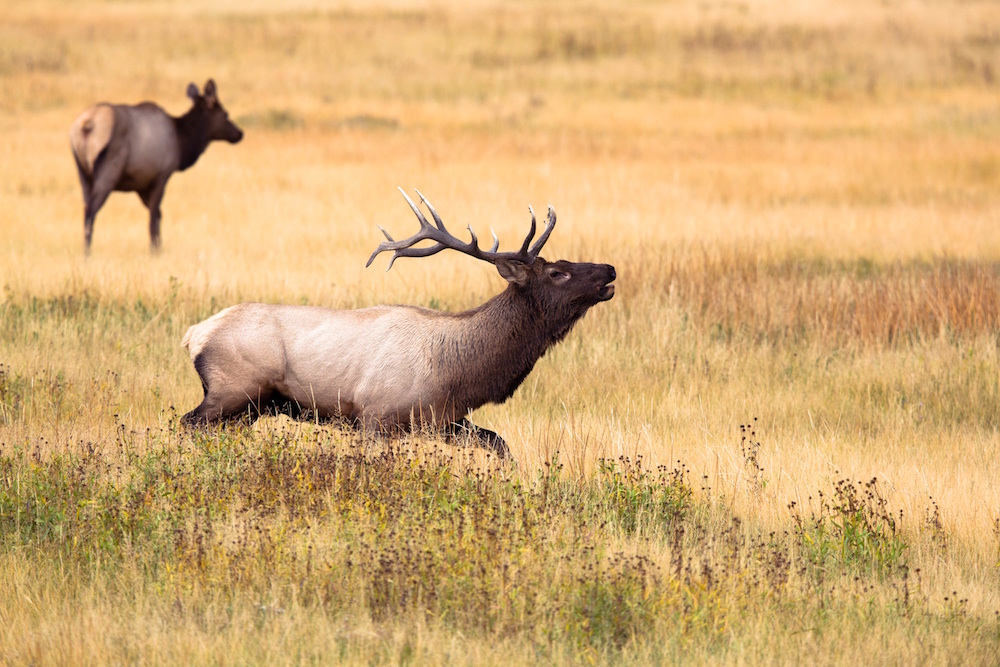 You will want to make use of an elk hunting outfitter if you have never hunted this large deer before. Elk hunting outfitters are very experienced hunters who guide novice hunters on their trip. They provide transportation, gear (called outfitting), food, horses, and shelter. They also use their expertise to ensure the hunters they guide are having fun and bag the elk they are there to hunt. As a novice hunter, be sure to ask for references and ask plenty of questions! Questions might include asking what provisions you should bring, how much experience the outfitter has, and how well they know the area where you are going. You should also find out the outfitter’s plans for emergency situations.
You will want to make use of an elk hunting outfitter if you have never hunted this large deer before. Elk hunting outfitters are very experienced hunters who guide novice hunters on their trip. They provide transportation, gear (called outfitting), food, horses, and shelter. They also use their expertise to ensure the hunters they guide are having fun and bag the elk they are there to hunt. As a novice hunter, be sure to ask for references and ask plenty of questions! Questions might include asking what provisions you should bring, how much experience the outfitter has, and how well they know the area where you are going. You should also find out the outfitter’s plans for emergency situations.
10. Ensure you have personal protective equipment (PPE).
There are two types of PPE you will need for hunting. The first is safety glasses. You want safety glasses to protect your eyes from UV light, gun powder residue that the wind might blow back in your face, and the chance that a stray shell will come back and hit you in the eye. The other type of PPE you need is ear plugs. You want ear plugs rather than muffs because you will want muffs that keep you warm. Hunters often overlook wearing ear plugs, but it can be one of the most important things you wear because without ear plugs, you are likely to lose one of your important hunting scents, your hearing.
11. Know the difference between a person and an elk.
The elk, five foot tall at the shoulder, compares in height to a horse. When hunting, especially in poor weather conditions, the differences between a horse and a cow elk are hard to recognize. Always wait until the entire elk or horse is in view and look for the hunter’s orange vest, belt, or cap on the back of the animal. The rider may be riding low to keep warm against the horse’s body, so make sure you look for that hunter’s orange clothing before you make a shot. Hundreds of injuries every year to humans and horses occur because hunters do not take the time for the whole mammal to come into sight and/or do not look for the hunter’s orange clothing. Also, if you see movement, wait until you have a confirmed clear target. Often, hunters mistake any movement for the movement of their prey. By confirming the target, it is unlikely you will shoot a person instead of the trophy of a lifetime, so stay safe by always checking twice before making a shot.
12. Learn how to field dress your kill.
There are several methods of field dressing an elk. The three most common methods are capping the elk for shoulder mounting, the basic field dressing, and the gutless boning method. Cape the elk for shoulder mounting if you want to save the hide and head for taxidermy. If you are not interested in keeping the horns or hide, you can use the basic field dressing, which is good for if you are close to camp, especially if you want to keep the bones. The gutless boning method is a great way to preserve the meat, but it does only that. This method is good if you are back country hunting, as there is no reason to take all those heavy bones with you. Whatever method you choose, you will want to have a sharp hunting knife and some garbage bags for storing the meat to cool it down and carry it. You may also want to carry a knife sharpener because dressing an elk is long work that dulls a blade quickly, making it necessary to sharpen the hunting knife during the process. While dressing, no matter what method you use, be very careful to not puncture the stomach; if you do, you will hear a whooshing sound, which means you need to work extremely fast to keep the stomach’s contents from tainting the meat. Remember, if you shoot the animal, it is your responsibility to dress the animal and not let the meat go to waste.
13. Clean and store your weapons of choice with care.
Every time you make a shot, carbon and copper is deposited in the barrel of your firearm. After twenty rounds, the fouling will get so bad that it will affect the accuracy of the rifle. Use a good, strong copper solvent in the bore to ensure a clean rifle for true accuracy. You will also want to clean your hunting knife after every field dressing. Hunting knifes are vulnerable to rusting, whether carbon steel or stainless steel. In the field, you should clean the knife by wiping it carefully with a rag, making sure to get all cracks and crevices, particularly where the handle meets the blade. However, this cannot take the place of a thorough cleaning when you get home. Use rotor oil and rub it in with a rag to get the knife properly cleaned and ready for the next dressing. Store your rifle and your knife in the proper cases to prevent damage from moisture, dust, dirt, or other foreign materials. By cleaning and storing your weapons properly, you will get more years out of them than if you left them uncleaned and in the open. You will also prevent unnecessary service by a gunsmith, saving you hundreds of dollars.
14. Watch videos and read articles to learn good techniques.
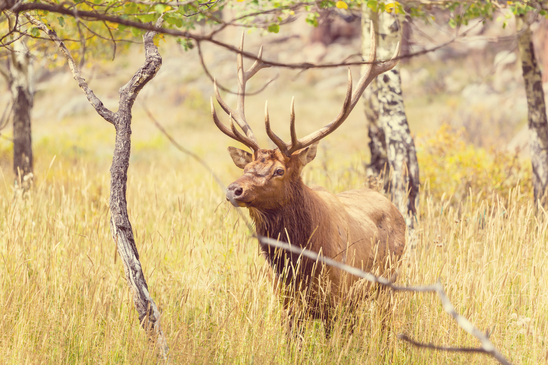 There are many websites that provide articles and videos on techniques for hunting, but elk hunting is a bit different from hunting deer or rabbits. There are not nearly as many websites about hunting elk as there are about hunting small game and deer. One website that has articles and videos about everything related to elk hunting is Elk101.com, which is dedicated to the sportsman. Their articles and videos will teach you all that you need to know beyond this article, from how to get an elk tag to how to get into “elk shape.” YouTube also has a wide variety of videos on elk hunting techniques and general hunting techniques from channels like the National Shooting Sports Foundation and ElkNut Outdoor Productions. You can also watch a variety of videos and read many articles to develop your own technique from bits and pieces of others’, creating the perfect style of hunting for you.
There are many websites that provide articles and videos on techniques for hunting, but elk hunting is a bit different from hunting deer or rabbits. There are not nearly as many websites about hunting elk as there are about hunting small game and deer. One website that has articles and videos about everything related to elk hunting is Elk101.com, which is dedicated to the sportsman. Their articles and videos will teach you all that you need to know beyond this article, from how to get an elk tag to how to get into “elk shape.” YouTube also has a wide variety of videos on elk hunting techniques and general hunting techniques from channels like the National Shooting Sports Foundation and ElkNut Outdoor Productions. You can also watch a variety of videos and read many articles to develop your own technique from bits and pieces of others’, creating the perfect style of hunting for you.
15. Decide whether you want a tree stand or ground blind and learn how to assemble it.
Hunters are constantly debating the merits of a tree stand and ground blind against each other. The truth is, they both have advantages and disadvantages that you will want to consider carefully before deciding which to use. If you go high enough (about thirty feet), your scent will not be detectable by elk, but your playing field will be lessened, while a tree stand at fifteen to twenty feet will give you a great advantage for targeting elk on the ground, but no elk will come near your tree stand because of scent. Finally, a ground blind requires that everything you use and wear has to be washed in scent-eliminating detergent, but will greatly reduce your playing field and is more tedious to set up. Whatever you decide to use, know how to assemble it before you get into the wilderness and work with your team of hunters and/or guides to assemble it quickly. Keep in mind, also, that while the stand or blind hides you, the movements and sounds you make are noticeable from a lot further of a distance than you might think.
16. Shop for clothing appropriate to the season and climate where you will be hunting.
When you are hunting elk, it is going to be freezing cold because you are likely to be in the mountains where the elk are more plentiful. Your clothing needs to reflect this. Make sure you have a base layer of long underwear (shirt and pants). Cover this with a long-sleeved shirt and long camouflage pants and one or two layers of socks, at least one of these being wool. You will also want warmth-giving accessories, such as hunting gloves (with or without a trigger finger), a lightweight coat or quilted shirt jacket, a medium-weight camoflauge exterior jacket, headgear such as a toboggan or skull cap, and earmuffs. Also, wear a scarf or similar piece of clothing to keep your neck and face warm. Of critical importance are your boots. An ill fitting pair of boots can make elk hunting miserable and almost impossible. Read our guide to hunting boots to get an idea of what you need. Finally, keep hand and foot warmers close at hand to insert into your gloves or boots in case your extremities become too cold. With the proper attire, you will be able to maintain body temperature and keep up your strength throughout the day.
17. Prepare for all weather.
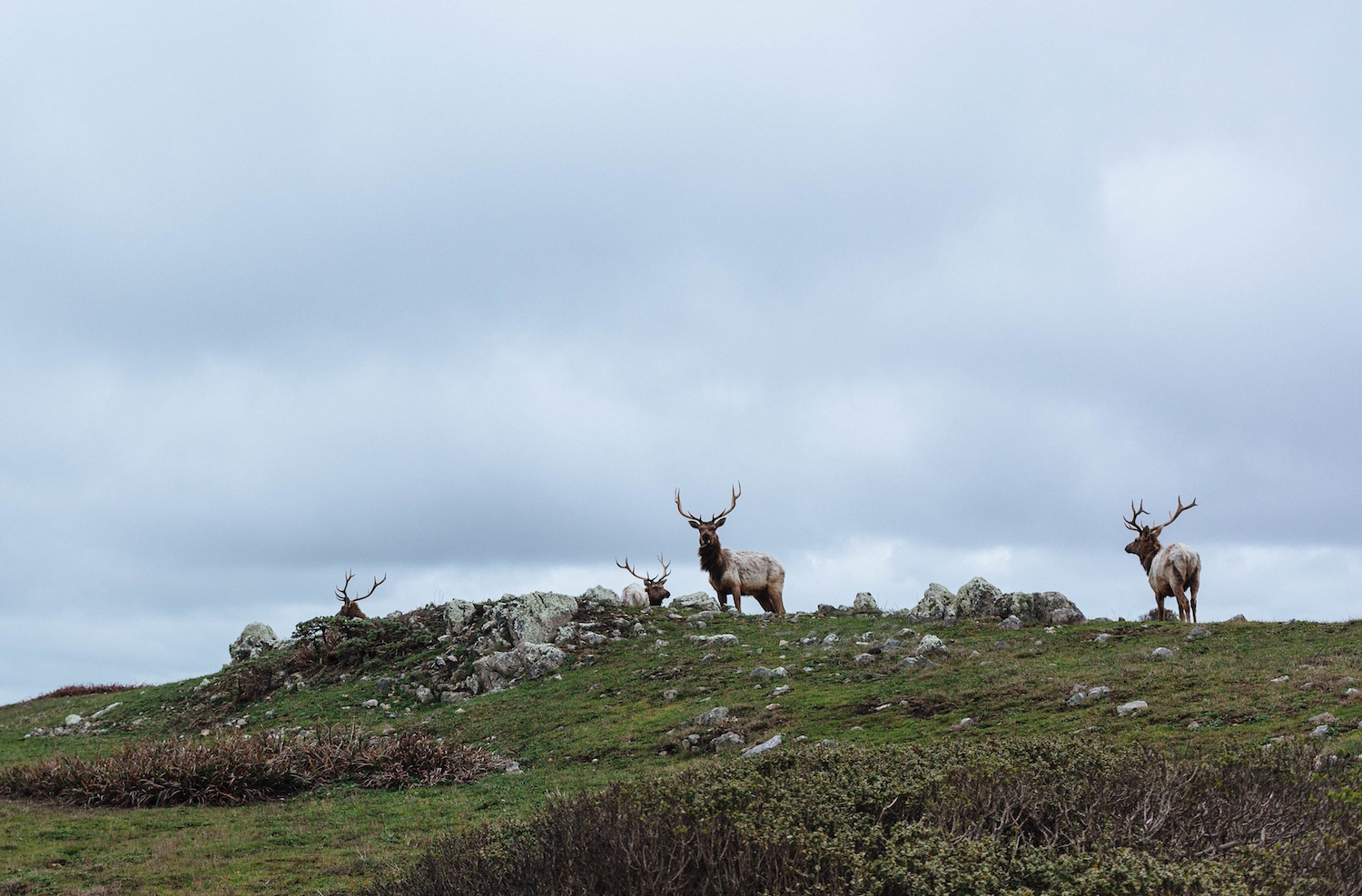 The weather can change at a minute’s notice, and you need to be able to change with it while hunting. Part of your pack should be dedicated to sunscreen, rain gear (such as a poncho or rain suit), and a first-aid kit for slips and falls due to mud, ice, or snow. In addition, you will want to either water-proof your boots or pack rubber golashes. You can also get slip-on rubberwear to cover your boots that weigh less and do not take as much room in your pack as goulashes. If you get soaked by precipitation, immediately return to camp and change into dry clothes to prevent hypothermia and frostbite. The elk will still be out there when you return to hunting, but you will not be able to continue hunting if you get hypothermia and/or frostbite.
The weather can change at a minute’s notice, and you need to be able to change with it while hunting. Part of your pack should be dedicated to sunscreen, rain gear (such as a poncho or rain suit), and a first-aid kit for slips and falls due to mud, ice, or snow. In addition, you will want to either water-proof your boots or pack rubber golashes. You can also get slip-on rubberwear to cover your boots that weigh less and do not take as much room in your pack as goulashes. If you get soaked by precipitation, immediately return to camp and change into dry clothes to prevent hypothermia and frostbite. The elk will still be out there when you return to hunting, but you will not be able to continue hunting if you get hypothermia and/or frostbite.
18. Stock up on the right foods and beverages.
Elk hunting is very demanding on the body, so eat nutritious food rather than junk and processed foods. Balance your meals between proteins and carbohydrates, with a good mix of fruits and vegetables thrown in as well. Do not diet while hunting elk; you need a moderate amount of fat to keep your body going. Free-dried foods are a great way to get a balanced diet without the weight of cans or bottles. By adding water and heat, you can have a healthy meal in minutes. Sodas and fruit juices are no good; stick to your water and lots of it. Also, keep on hand small snacks that will not crunch while you are in the tree stand or ground blind, such as energy bars or jerky.
19. Do not let alcohol or drugs get in the way of hunting.
You may not think alcohol or drugs will impair your hunting abilities. You may feel they actually enhance your experience. The fact is alcohol and other drugs fog the mind, leaving the hunter unable to safely handle a firearm. This can lead to hunting injuries such as shooting a person instead of an elk or placing a shot in the wrong location. It is also illegal in most states to not only hunt, but also handle a firearm while under the influence. In the states where it is illegal, it is considered a felony offense, and you can be fined several hundreds of dollars and/or given a serious jail time. It will also, of course, go on your permanent record. Being drug-free is being responsible.
20. Use GPS to track where your vehicle or camp is located.
It is very easy, especially in the dark hours just after dusk and dawn when the elk are most active, to get lost in the wilderness. With the proper global positioning system unit, such as from your local outdoor retailer, you can put in a GPS tracking point for your vehicle or camp, then use that tracking point to set a rout from your location back to the camp or vehicle Another use of a GPS unit is to keep track of where you have hunted so you can move around during a longer hunting trip. Also, in case of emergency, you can give your GPS point to rescue personnel via CB radio. You can also give the GPS points to a ranger or other person who is located nearby in case there is a family emergency or there is a need for someone to come quicker than emergency rescue can.
There are many resources to teach you about elk hunting, but let these twenty tips be the open door to your education. With these twenty tips and some research to find the best location for you, elk hunting will be a joyful and memorable activity for you to enjoy for years to come. Take each tip into consideration and research more about its topic and it will not be long before you can hunt for elk successfully. The more education you give yourself, the more likely you are to return whole-bodied and with a trophy to memorialize your hunting trip. Such a trophy as elk antlers or the whole head will quickly make your friends and neighbors wish they could go hunting as well.
